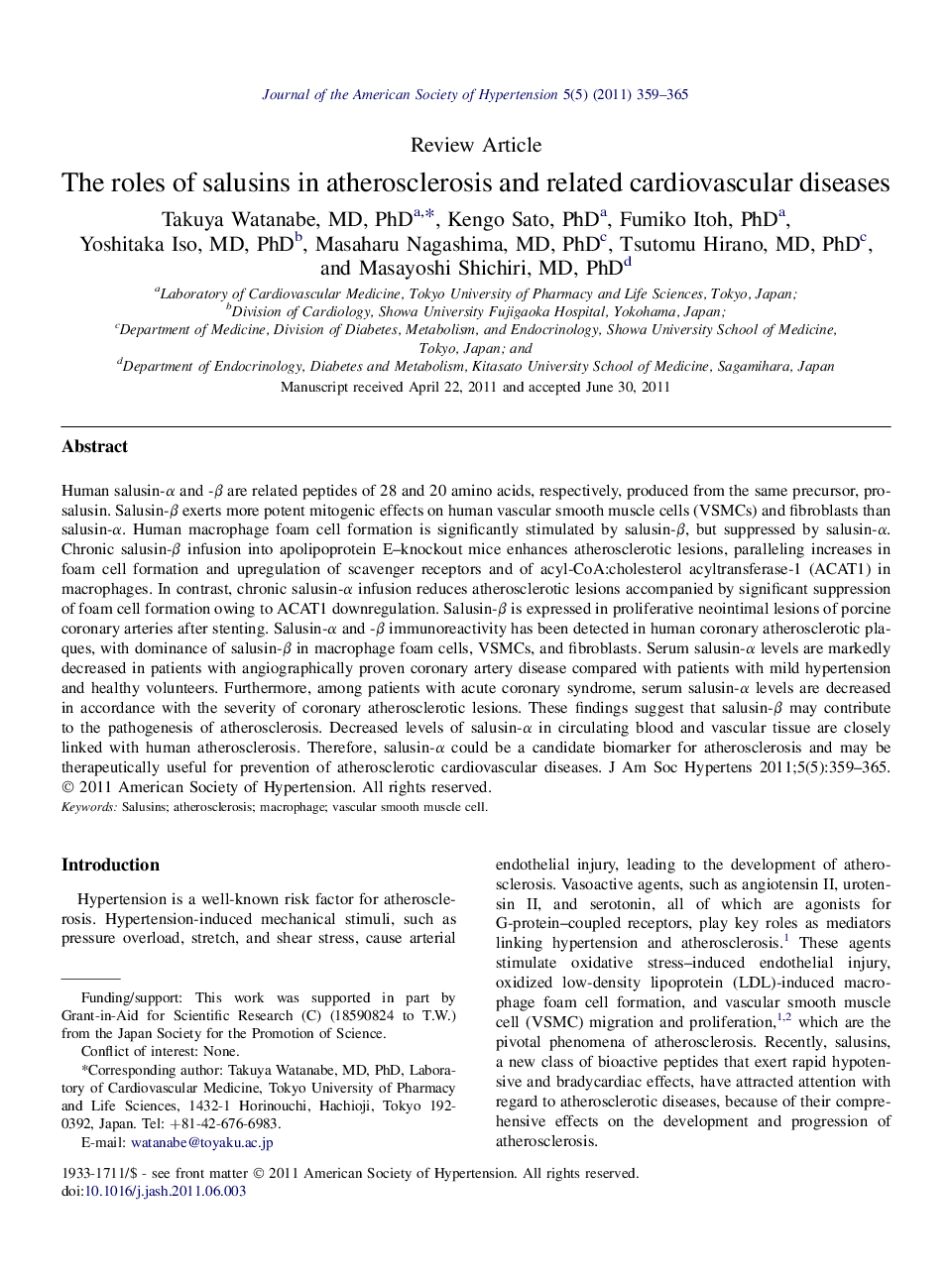| Article ID | Journal | Published Year | Pages | File Type |
|---|---|---|---|---|
| 2957280 | Journal of the American Society of Hypertension | 2011 | 7 Pages |
Abstract
Human salusin-α and -β are related peptides of 28 and 20 amino acids, respectively, produced from the same precursor, prosalusin. Salusin-β exerts more potent mitogenic effects on human vascular smooth muscle cells (VSMCs) and fibroblasts than salusin-α. Human macrophage foam cell formation is significantly stimulated by salusin-β, but suppressed by salusin-α. Chronic salusin-β infusion into apolipoprotein E-knockout mice enhances atherosclerotic lesions, paralleling increases in foam cell formation and upregulation of scavenger receptors and of acyl-CoA:cholesterol acyltransferase-1 (ACAT1) in macrophages. In contrast, chronic salusin-α infusion reduces atherosclerotic lesions accompanied by significant suppression of foam cell formation owing to ACAT1 downregulation. Salusin-β is expressed in proliferative neointimal lesions of porcine coronary arteries after stenting. Salusin-α and -β immunoreactivity has been detected in human coronary atherosclerotic plaques, with dominance of salusin-β in macrophage foam cells, VSMCs, and fibroblasts. Serum salusin-α levels are markedly decreased in patients with angiographically proven coronary artery disease compared with patients with mild hypertension and healthy volunteers. Furthermore, among patients with acute coronary syndrome, serum salusin-α levels are decreased in accordance with the severity of coronary atherosclerotic lesions. These findings suggest that salusin-β may contribute to the pathogenesis of atherosclerosis. Decreased levels of salusin-α in circulating blood and vascular tissue are closely linked with human atherosclerosis. Therefore, salusin-α could be a candidate biomarker for atherosclerosis and may be therapeutically useful for prevention of atherosclerotic cardiovascular diseases.
Related Topics
Life Sciences
Neuroscience
Endocrine and Autonomic Systems
Authors
Takuya MD, PhD, Kengo PhD, Fumiko PhD, Yoshitaka MD, PhD, Masaharu MD, PhD, Tsutomu MD, PhD, Masayoshi MD, PhD,
